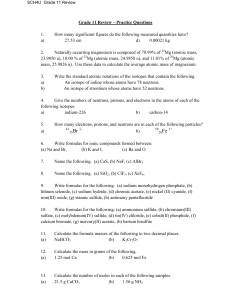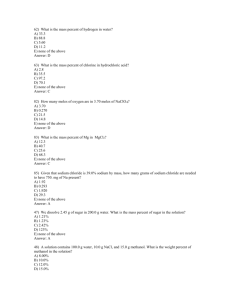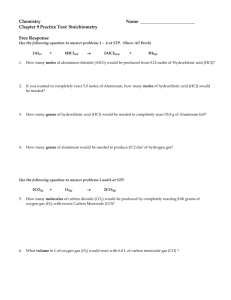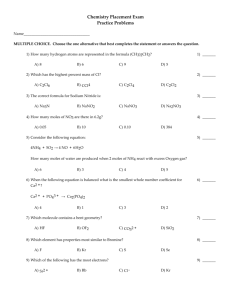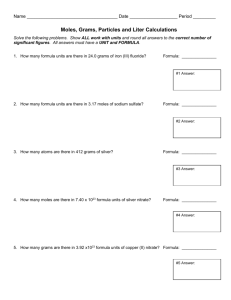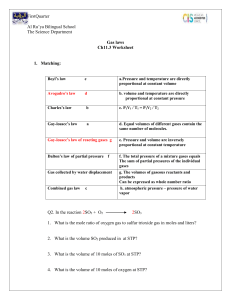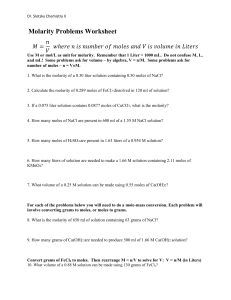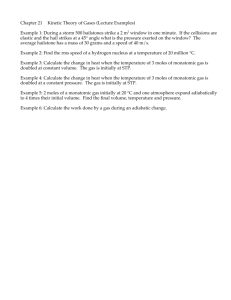BENCHMARK REVIEW 3rd quarter 1015
advertisement
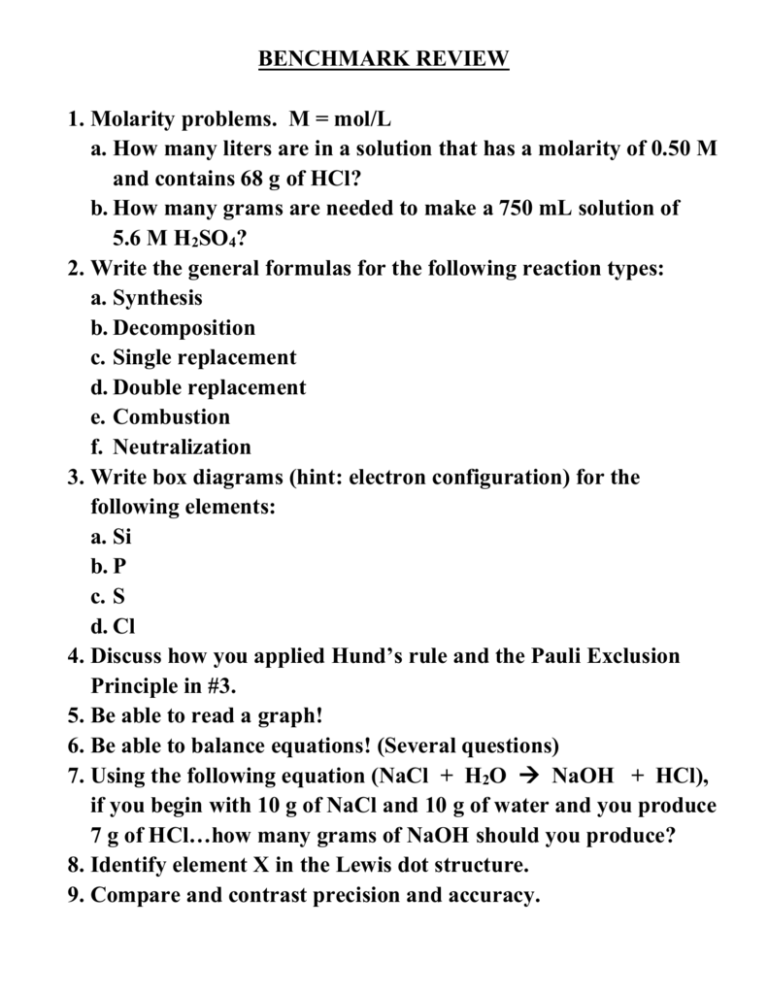
BENCHMARK REVIEW 1. Molarity problems. M = mol/L a. How many liters are in a solution that has a molarity of 0.50 M and contains 68 g of HCl? b. How many grams are needed to make a 750 mL solution of 5.6 M H2SO4? 2. Write the general formulas for the following reaction types: a. Synthesis b. Decomposition c. Single replacement d. Double replacement e. Combustion f. Neutralization 3. Write box diagrams (hint: electron configuration) for the following elements: a. Si b. P c. S d. Cl 4. Discuss how you applied Hund’s rule and the Pauli Exclusion Principle in #3. 5. Be able to read a graph! 6. Be able to balance equations! (Several questions) 7. Using the following equation (NaCl + H2O NaOH + HCl), if you begin with 10 g of NaCl and 10 g of water and you produce 7 g of HCl…how many grams of NaOH should you produce? 8. Identify element X in the Lewis dot structure. 9. Compare and contrast precision and accuracy. 10. Name the following molecules: a. SiCl4 b. MgCl2 11. 1 mole of gas = 22.4 L a. How many liters (or what is the volume) of 23.0 g of helium at STP? 12. What happened when an atom takes a positive or negative charge? 13. Define heat of fusion and heat of vaporization. 14. What is the formula for: a. Phosphorus pentabromide b. Zinc fluoride 15. Define chromatography. 16. A sample of gas occupies 5 L at 30oC and 101.3 kPa. What would be the volume at 10oC and 202.6 kPa? 17. What is the Lewis dot structure for silicon? 18. If the empirical formulas for a substance is CH and the molecular mass is 78 g/mol…what is the molecular formula? 19. Define equilibrium. 20. How many grams of chlorine are present in 3 moles of hydrochloric acid? 21. Explain the relationship between gas temperature and volume…Charles’ law. 22. Moles to atoms conversions a. Convert 2 moles of carbon atoms to moles. b. Convert 3.6 x 1024 atoms of magnesium to moles. 23. What are the diatomic elements? 24. What is the molar mass of a. MgCl2 b. (NH4)2SO4 25. What is the shape of CO, CO2, BCl3, CH4, NH3? 26. Specific heat calculations (q = cmT)…look in you notes for last unit! 27. Subatomic particles for different elements (protons, neutrons and electrons). 28. Difference between natural and synthetic polymers. 29. pH + pOH = 14 a. If a substance has a pH of 6…what is its pOH? 30. Be able to read a solubility curve (from your solutions notes – before Spring Break) 31. Discuss the differences between Thompson, Rutherford, Bohr and Quantum atomic theory. 32. Know the families on the periodic table. 33. Know the following trends a. Atomic radius (size) b. Electronegativity c. Ionization energy 34. MV = MV a. If you have 30 mL a 2.0 M H2SO4 solution…how many milliliters of 0.5 M H2SO4 can you make? 35. Convert the following gases at STP to liters (volume) a. 6 g Ne b. 4 moles He c. 1.2 x 1023 molecules of CO 36. Discuss the difference between ionic and covalent bonding.


